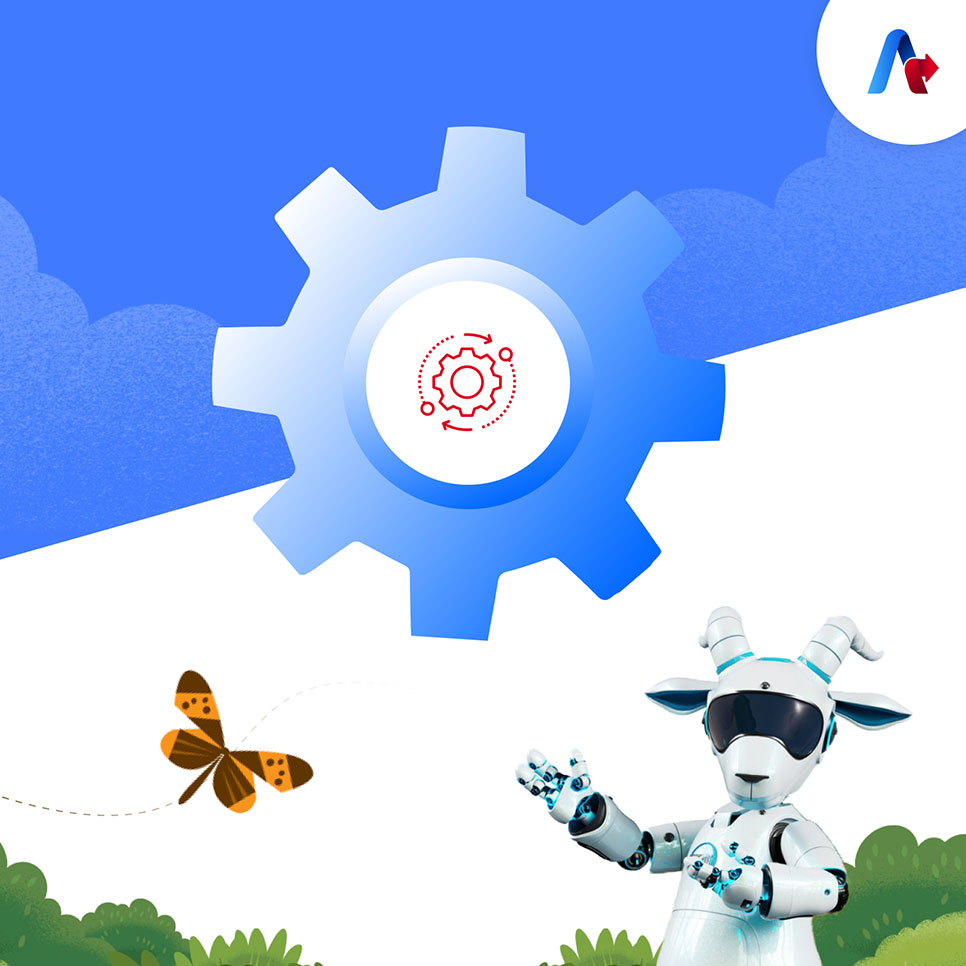MuleSoft RPA
BLOG
8 min read
MuleSoft Anypoint Code Builder: Setup, Features, and Use Cases
Flexibility and speed are crucial elements for any development cycle. As part of MuleSoft's vision to support and enhance cloud-based and low-code development for API integration, MuleSoft's Code Builder was officially introduced in 2022. This tool offers a robust level of efficiency and experience to the developers and those seeking a more visual approach to integration. Specifically designed for Visual Studio Code, MuleSoft's Anypoint Code Builder simplifies and enhances the development process, emphasizing a seamless experience for working on MuleSoft applications.
What is MuleSoft Anypoint Code Builder?
Anypoint Code Builder (ACB) is MuleSoft’s next-generation integrated development environment (IDE). It allows developers to design, develop and deploy APIs and integrations. The MuleSoft Anypoint Code Builder is based on a similar VS code experience and provides an easy-to-use development environment for desktop and cloud. It is a comprehensive solution built within MuleSoft’s Anypoint Platform, simplifying the traditionally complex process of connecting applications, data, and devices. In this blog, we will explore how MuleSoft’s Code Builder innovation can help you build faster, more efficient and simplified integrations.
Introducing Einstein for Anypoint Code Builder
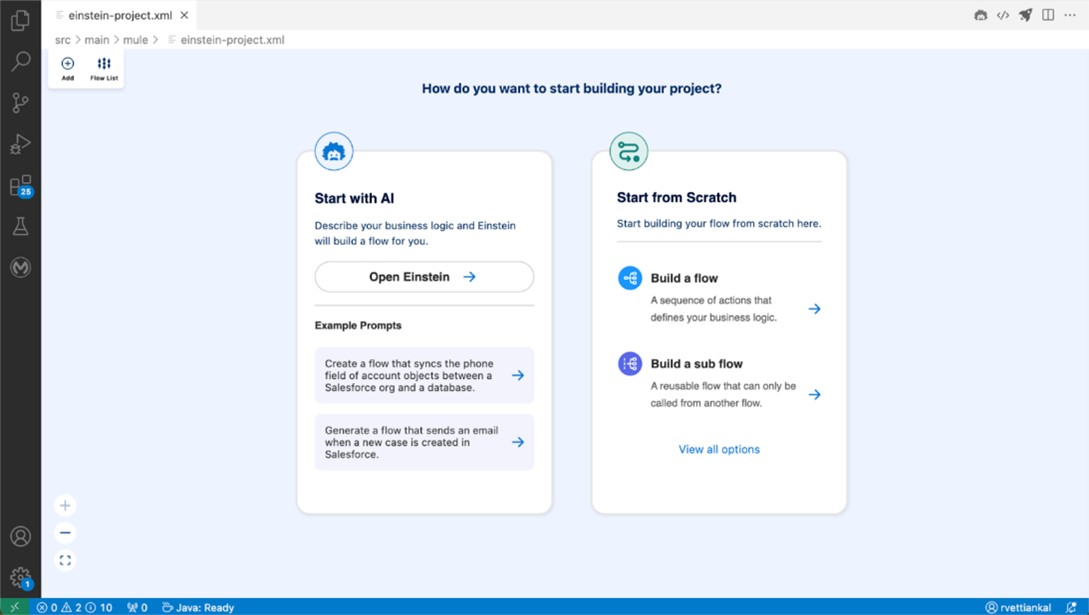
MuleSoft in August 2024 announced the general availability of Einstein for MuleSoft Anypoint Code Builder. With the aim of enhancing innovation in integration projects Einstein integrates AI capabilities directly into the development environment.
The Power of AI meets MuleSoft development
Einstein for Anypoint Code Builder will enable developers to initiate integration projects using natural language prompts, enabling them to jumpstart their integration projects seamlessly by simply describing the business logic.
Compatibility with the MuleSoft ecosystem
Designed specifically for MuleSoft, Einstein provides optimized AI-generated code compatible with over 175 MuleSoft connectors, ensuring that generated code aligns with MuleSoft’s standards and practices.
Security with Einstein Trust Layer
To maintain the accuracy and safety of AI outputs, and promote ethical AI practices, Einstein Trust Layer is a comprehensive security framework designed to protect your data and ensure its privacy and security of your data.
Learn How Mulesoft’s Innovations Can Work for You
Contact Us for a ConsultationPurpose of MuleSoft's Code Builder
The challenges faced by small and medium-sized businesses encompass limited financial resources and a shortage of in-house technical expertise. Constrained budgets hinder the allocation of substantial funds for advanced data tools, necessitating the identification of cost-effective solutions.
MuleSoft's Code Builder is a collaborative, cloud-based development environment tailored for MuleSoft's Anypoint Platform. The primary purpose of Code Builder is to simplify and accelerate the process of building Mule applications, fostering collaboration among development teams. It offers an intuitive interface and a suite of features aimed at improving efficiency and reducing the development lifecycle for MuleSoft integrations.
Key Features of Anypoint Code Builder
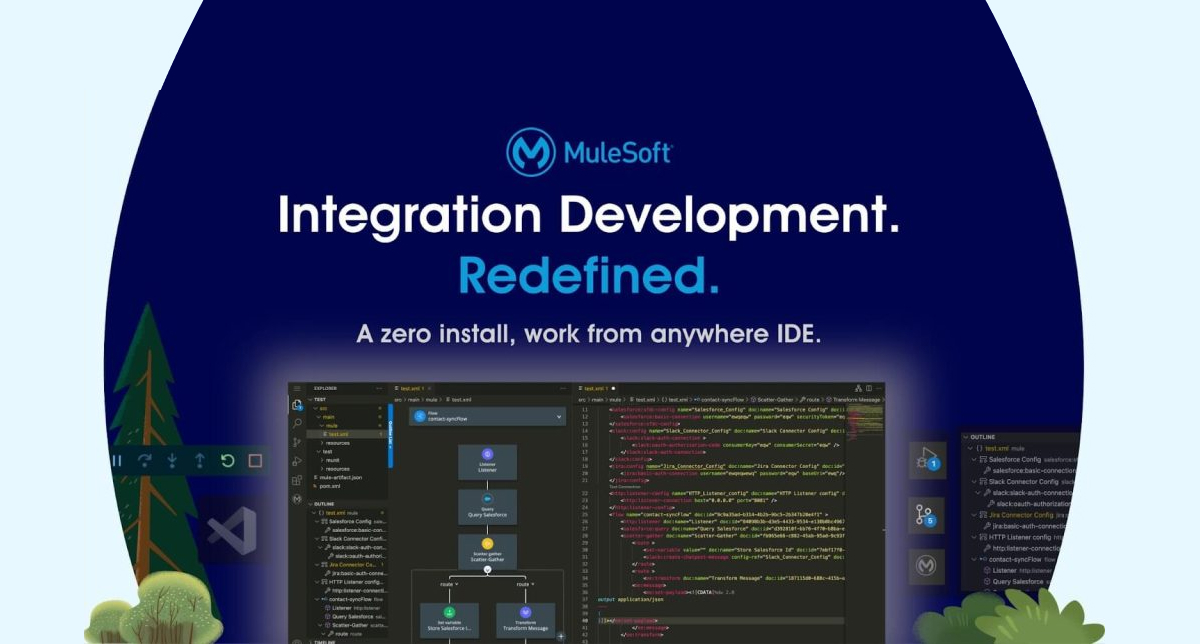
By providing a single, unified environment for building, testing, and debugging APIs and integrations, Anypoint Code Builder helps MuleSoft developers streamline their development process. Here’s how:
01 - Unified Environment
By providing a single, unified environment for building, testing, and debugging APIs and integrations, MuleSoft Anypoint studio Code Builder eliminates the need to switch between multiple tools and platforms. This reduces context-switching and increases developer productivity.
02 - Improved Collaboration
Anypoint Code Builder's integration with version control systems enables developers to collaborate more effectively with their team, ensuring that everyone is working with the most up-to-date code.
03 - Faster Development
Intelligent code assistance and debugging capabilities help developers write, test, and debug their code faster and more accurately, resulting in shorter development cycles and quicker time-to-market for APIs and integrations.
04 - Better Quality
Finally, integrated testing with MUnit ensures that developers are building reliable and robust code, reducing the risk of issues in production.
Prerequisites
Ready to get started with your coding adventure? Let's ensure you have the prerequisites for using Code Builder in place for a seamless coding experience.

How to Implement APIs using Anypoint Code Builder
Before diving into the steps API implementation let’s first explore top five methods methods for implementing APIs using Anypoint Code Builder:
- API Specification: Design API specifications using RAML or Open API to define endpoints and operations. Based on these specifications, code builders provide tools to validate and scaffold.
- Flow Designer: You can use the low code, drag-and-drop interface to create quick APIs. Here pre-built connectors orchestrate data integrations and transformations.
- Mule Applications: To have advanced control over your data flows, logic and customization you can implement APIs using Mule applications in Java or XML.
- API Kit: Want to let the dev focus on business logic? Generate flows directly from RAML/OAS specs with automated setup and routing.
- Testing and Debugging: Debug, test and monitor APIs using built-in tools for smooth performance and functionality before developing.
Now let’s have a look into how to implement APIs using MuleSoft anypoint code builder:
Prerequisites:
Create test account on Anypoint platform.
Step 1:
Start Anypoint Code Builder
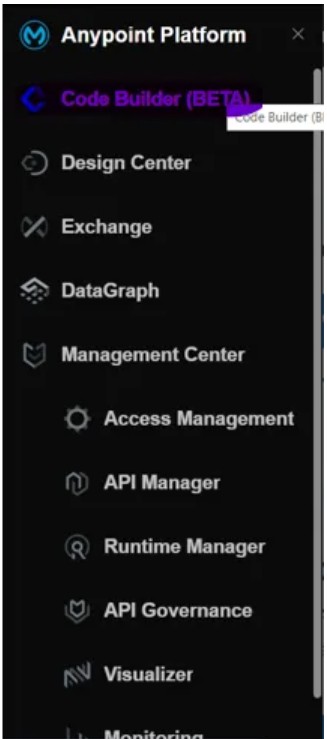
Step 2:
- Create a New API Project.
- Click on File > New > Mule Project to create a new Mule project.
- Shows the "New Mule Project" wizard, where you enter the project name.
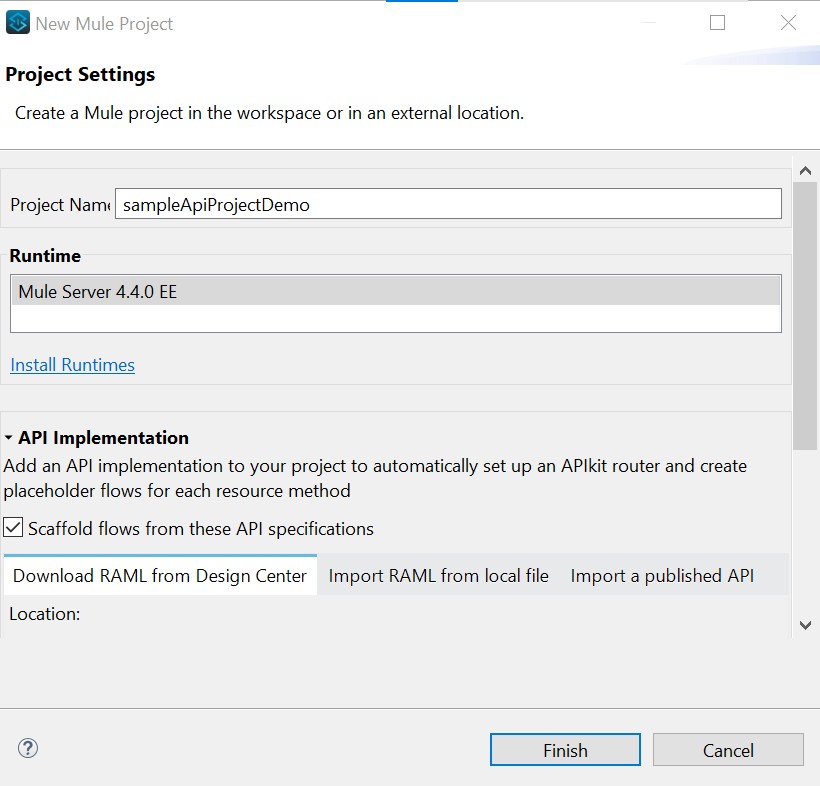
Step 3:
- RAML define in code editor.
- Show the RAML editor with example API definition (like /users endpoint)
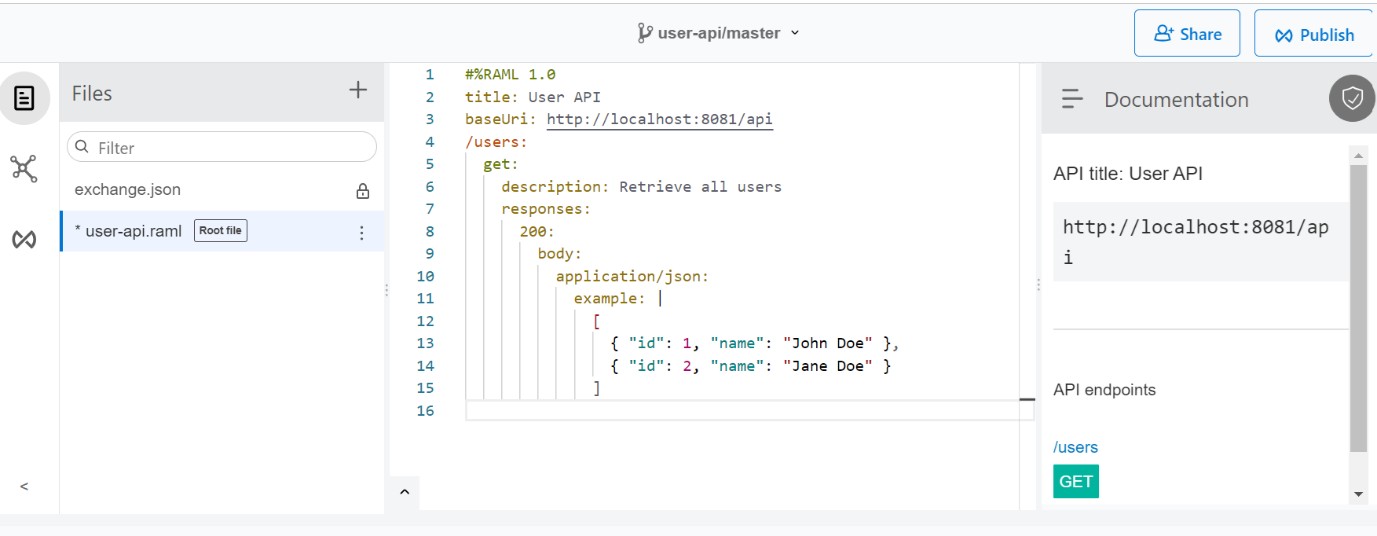
Step 4:
- Mule Flow with HTTP Listener.
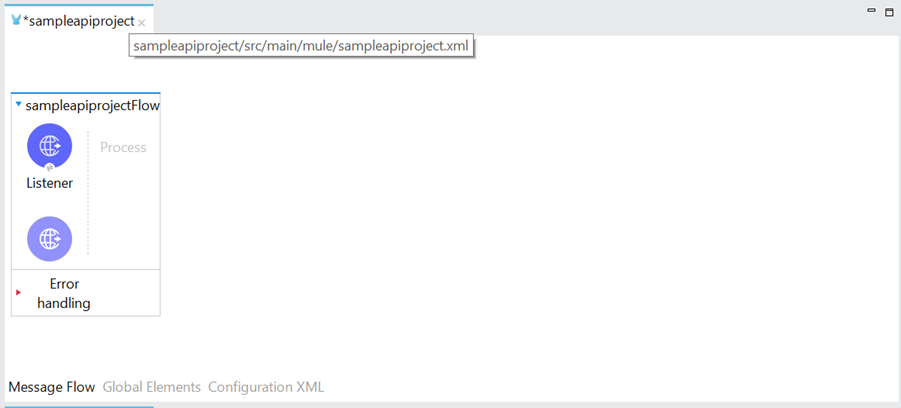
Step 5:
- Testing API in postman. Shows a test request to http://localhost:8081/api/users in Postman, with a successful response.
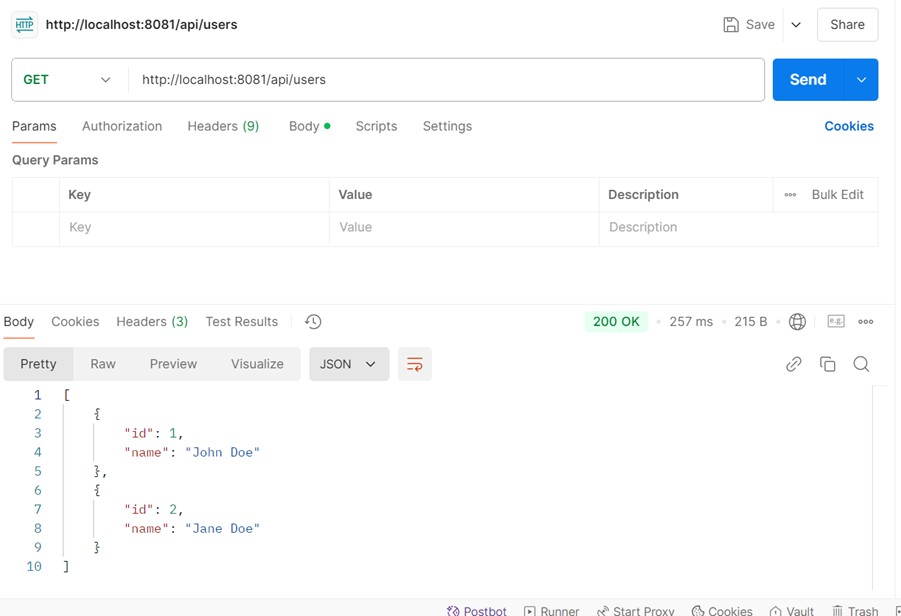
Step 6:
- Deploying API.
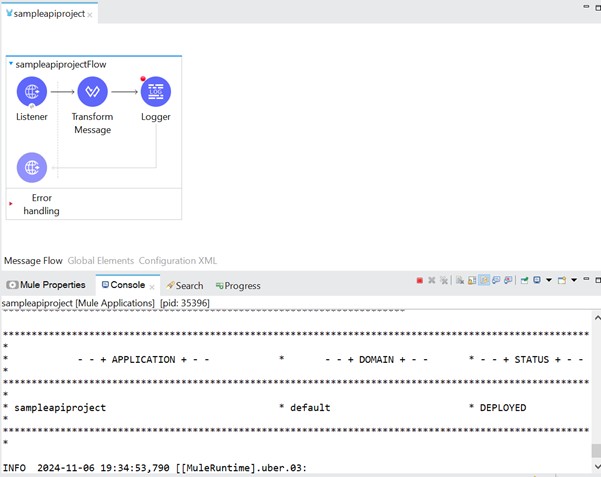
Want To Explore How Anypoint Builder Can Benefit Your Business?
Talk To Our ExpertsBest Practices and Tips
Now that you have got a fair understanding of the prerequisites for using Mulesoft Code Builder, let’s enhance the experience further with these best practices and pro tips. We're talking modular marvels, performance power-ups, and streamlined coding adventures. Check them out to level up your coding game!
01 - Modular Development
Break down your Mule applications into modular components and reusable flows for better maintainability and scalability. Leverage Code Builder to create modular templates that encapsulate common functionality, promoting code reuse.
02 - Performance Monitoring
Implement performance monitoring tools and techniques to identify and address potential bottlenecks in your Mule applications. Use Code Builder to easily integrate performance monitoring components and instrumentation into your flows.
03 - Dependency Management
Manage dependencies efficiently, keeping libraries and connectors up to date using Code Builder's features for dependency resolution. Regularly review and update dependencies to benefit from bug fixes, improvements, and new features.
04 - Environment Configuration
Utilize Code Builder to manage environment-specific configurations, making it easier to deploy applications across different environments. Follow best practices for secure and parameterized configuration management.
05 - Continuous Integration/Continuous Deployment (CI/CD)
Implement CI/CD pipelines to automate the testing and deployment of Mule applications. Integrate Code Builder with CI/CD tools to enable seamless automation and deployment processes.
06 - Code Reviews
Conduct regular code reviews within your team to ensure adherence to coding standards and best practices. Use Code Builder to facilitate code reviews with features like syntax highlighting and inline commenting.
07 - Performance Tuning
Regularly review and optimize your Mule applications for better performance. Leverage Code Builder to identify and address potential performance bottlenecks through code analysis and profiling.
08 - Global Error Handling
Implement a centralized error handling strategy using Code Builder, ensuring consistent error responses and logging across your applications.
Setting Up for Success
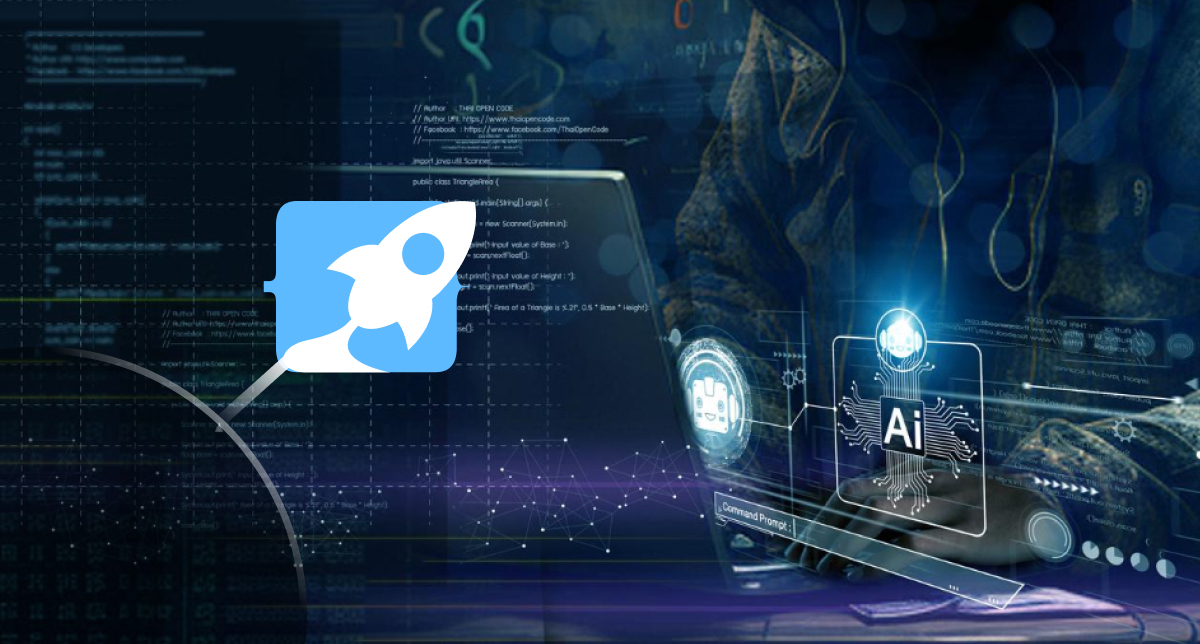
MuleSoft's Code Builder is a game-changer for MuleSoft development, enhancing the developer's experience with seamless integration in Visual Studio Code. With its powerful features, code templates, debugging, testing, and more, it simplifies Mule application development. By following best practices, setting up the environment, and creating your first Mule application, you can harness the full potential of Code Builder. Embrace this tool to streamline your development process and take your MuleSoft projects to new heights. Ready to streamline development and boost productivity? It is always a smooth sail under expert guidance. Industry experts like Accelirate can assist you in your MuleSoft projects and elevate your experience. Explore our comprehensive services and get in touch with us for more details.
FAQs
Anypoint Code Builder and Anypoint Studio are both MuleSoft development environments, but they cater to different user needs.
Anypoint Code Builder is a cloud-based Integrated Development Environment (IDE) accessible through a browser. It offers developers the flexibility to work from anywhere and integrates with Visual Studio Code, ideal for collaborative, real-time API and integration development. The platform includes AI-powered features like Einstein, which uses natural language to generate code and workflows, enhancing productivity.
Anypoint Studio is a desktop-based IDE built specifically for MuleSoft’s Mule runtime. It provides a graphical, drag-and-drop interface for creating APIs and integrations, making it accessible to both technical and semi-technical users. Anypoint Studio supports offline development and includes extensive debugging tools, making it ideal for developers who prefer working locally or need control over runtime configurations.

